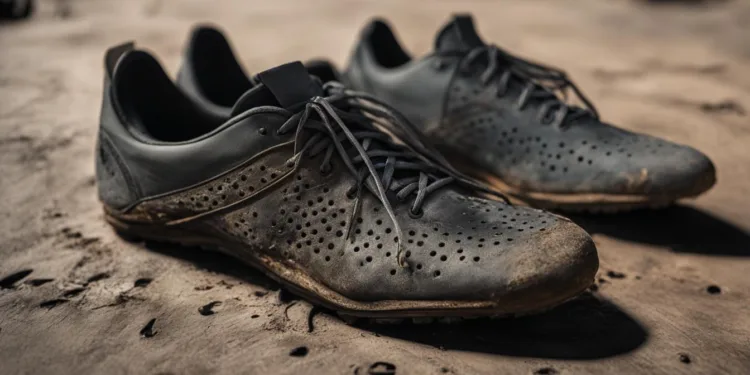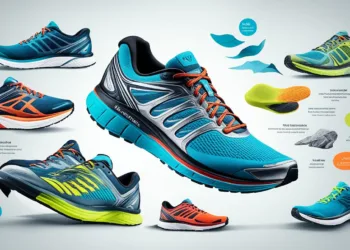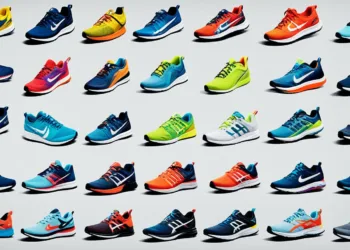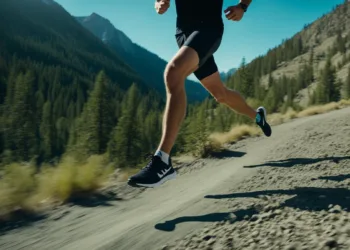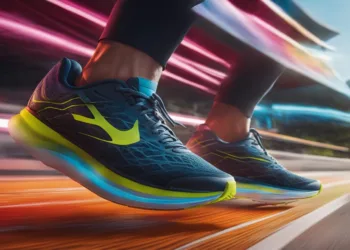Table of Contents
- 1 Understanding the Urgency of Running Shoes Sole Repair
- 2 Running Shoes Sole Repair: A Step-by-Step Guide
- 3 The Environmental Benefits of Fixing Damaged Running Shoe Soles
- 4 DIY Running Shoe Sole Repair Versus Professional Restoration
- 5 Extending Running Shoe Sole Life Through Maintenance
- 6 Running Shoe Sole Restoration Tips from the Experts
When it comes to your running shoes, you appreciate both performance and comfort. These indispensable companions on your daily miles are indeed an investment. Understanding and applying running shoes sole repair techniques can significantly extend their life, offering economic benefits and contributing to a more sustainable lifestyle.
Resoling is restoring a shoe’s foundation, ensuring the continued use of your beloved runners. Services like NuShoe offer expert restoration, further extending the lifespan of your running shoes by removing the worn-out sole and securely attaching a new, durable one. The restoration maintains your shoe’s original comfort and shape, making it a worthwhile investment for athletes and running enthusiasts.
Besides the cost savings, re-soling has notable environmental benefits. Running shoe sole restoration aligns perfectly with these goals in an era of trying to decrease waste and reduce our carbon footprint. So, by opting for repair over replacement, you not only save money but also make a positive contribution to the environment.
To help you understand this concept better, we’ve compiled some running shoe sole restoration tips, ensuring you know when it’s time to repair, how to go about it, and how you can comfortably stretch the life of your running shoes’ soles. Let’s take a step forward and dive deeper!
Key takeaways:
- The urgency of Sole Repair: Understanding the importance of timely repair of running shoe soles.
- Sole Repair Guide: Step-by-step instructions for repairing the sole of running shoes.
- Environmental Benefits: The positive environmental impact of fixing damaged running shoe soles.
- DIY vs Professional: Comparing do-it-yourself sole repair techniques with professional restoration services.
- Extending Sole Life: Tips on maintenance practices to prolong the life of running shoe soles.
- Expert Restoration Tips: Expert advice on restoring the soles of running shoes.
Understanding the Urgency of Running Shoes Sole Repair
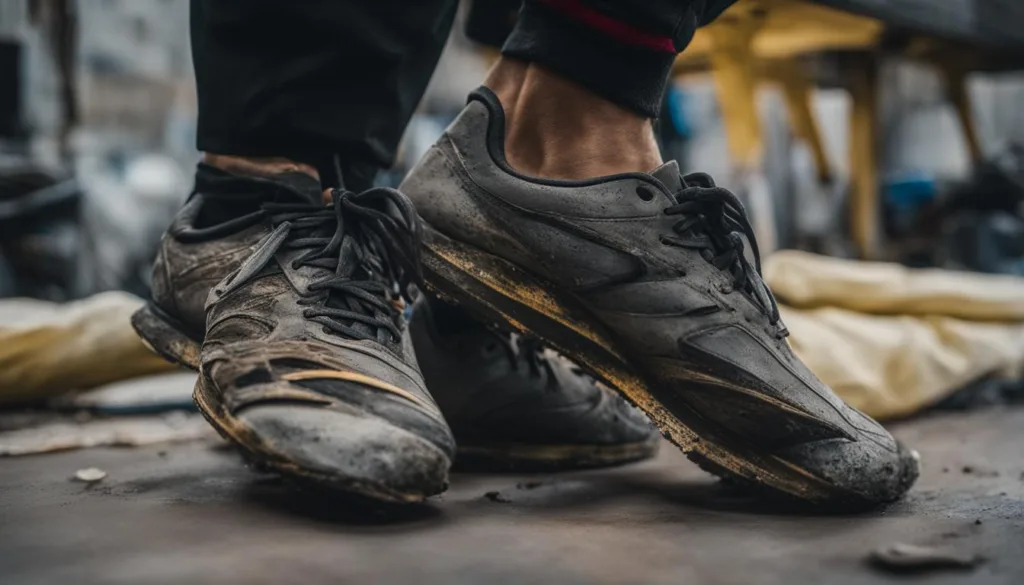
Running shoes, seen as an investment by severe athletes and exercise enthusiasts, are foundational in ensuring performance and comfort. Therefore, maintaining their condition is paramount. One method to prolong the usability of the shoe involves repairing running shoe soles, a specialized task that requires proficient insight and expertise.
Maximizing Performance and Comfort
The act of resoling, which can be performed on various athletic shoes, restores their functionality for continued use. The process is delicate and intricate, requiring skill to prevent damage to the shoe’s upper part and properly secure the new sole. Given the high-impact nature of running, the new sole requires robust and durable materials. Companies like NuShoe specialize in maintaining the original shoe shape and comfort level during this process, thus being a recommendable choice for individuals who pay high importance to quality and sustainability regarding their running gear.
| Step | Action | Outcome |
|---|---|---|
| 1 | Assessment of shoe condition | Identify the need for resoling |
| 2 | Removal of old sole | Preparation for new sole |
| 3 | Selection of new sole | High-quality sole fitting the specific shoe model |
| 4 | Attachment of the new sole | Professionally fitted new sole, ready for use |
Sustainability in the Footwear Industry
Interestingly, the practice of resoling is more than just a repair technique, it aligns with the more excellent principle of sustainability. Shoe production is a resource-intensive exercise. Therefore, by prolonging the shoe’s life through sole repair, we decrease the demand, thus indirectly reducing waste and controlling carbon emissions. This principle can be commodified in the phrase ‘repair, don’t replace’.
The Role of Resoling in Reducing Environmental Footprint
When a pair of shoes is repaired rather than replaced, it significantly reduces environmental impact. The intricate and tailored process considers the original comfort and shape, making it possible to extend the life of a pair of shoes considerably. This, in turn, lessens the need for new production, effectively launching a double attack on waste and carbon emissions, thus significantly reducing the environmental footprint.
“read also: Hybrid Cushion Running Shoes“
Running Shoes Sole Repair: A Step-by-Step Guide
Repairing a running shoe’s worn-out sole is an intricate process that blends technical proficiency and artistry. The resoling process is commonly used to fix damaged running shoe soles. With the proper techniques and resources, you can extend the lifespan of your favourite pair, saving money and contributing to sustainability.
Step One: The first stage of this running shoe repair technique involves separating the worn-out sole from the upper part of the running shoe. Trained technicians adeptly carry out this process to preserve the integrity of the shoe’s upper portion.
Step Two: Subsequently, a new sole is prepared. This new sole is mainly selected for its robust endurance and suitability for high-impact sports like running.
Step Three: The new sole is then attached to the shoe’s upper part. This requires strong, durable adhesives or stitching, ensuring a secure and long-lasting bond.
Step Four: Finally, the sole is given ample time to set and strengthen its bond with the shoe’s upper part. A sufficient bonding period is crucial to a successful and durable resoling process.
This step-by-step running shoe sole repair guide lets you understand how expert services like NuShoe approach and handle the delicate task of repairing running shoe soles. They combine their technical expertise with meticulous attention to detail, restoring the shoe to its former fit and comfort and contributing to an environmentally friendly solution.
“read also: Running Shoes for Kids“
The Environmental Benefits of Fixing Damaged Running Shoe Soles
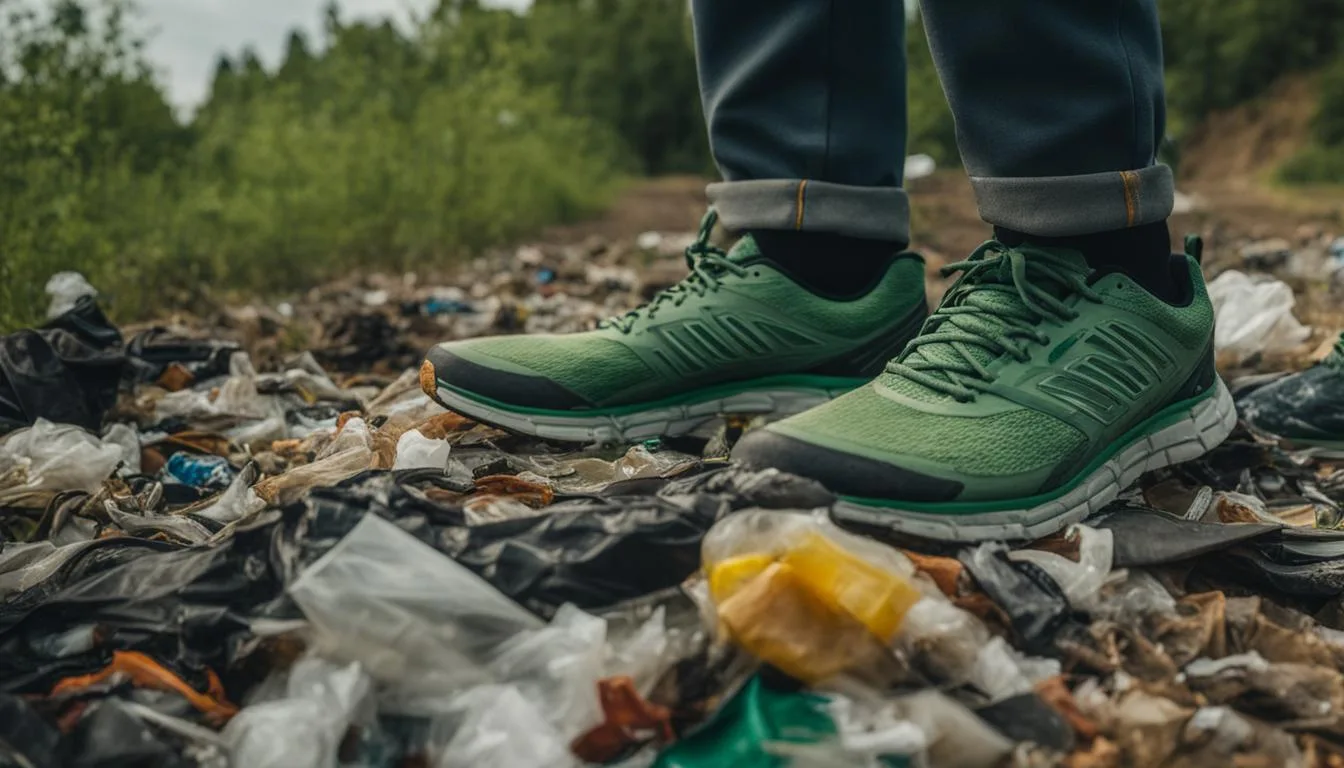
We can’t overlook the eco-friendly aspects of repairing running shoe soles. Besides protecting our feet, extending the life of well-loved athletic footwear can significantly offset environmental damage. It helps mitigate the harsh effects of our ‘use and throw away’ culture. Let’s delve into how these green benefits unfold.
Combating the Landfill Problem One Pair at a Time
Our landfills are swelling with countless pairs of running shoes discarded every year. Unfortunately, the materials used in running shoes aren’t notably biodegradable, leading to prolonged environmental repercussions. However, the practice of Running Shoes Sole Repair significantly curbs this growing waste issue. When you give your worn-out shoes a new lease of life, you’re making a statement against rampant consumerism and its consequent detrimental environmental impacts. You’re helping reduce solid waste production, effectively Combating Running Shoe Waste.
The Carbon Footprint of New Vs. Repaired Running Shoes
It’s essential to contemplate the energy input and carbon emissions linked with the manufacturing process of running shoes. A pair of brand-new running shoes, starting as raw materials in the ground and ending up on your feet, contributes to about 14 kilograms of CO2 emissions. Conversely, sole repair requires a fraction of the energy, leading to a much smaller carbon footprint. Choosing to repair instead of replace thus plays an essential role in Reducing Running Shoes’ Carbon Footprint.
When tossing out your worn-out running shoes or having their soles repaired, remember that your choice impacts more than just your comfort and thriftiness; it also has environmental implications. Wise up to the benefits of sole repair, and let’s pave the way to a healthier, greener planet.
| Benefits | How it helps |
|---|---|
| Running Shoes Sole Repair | This reduces the reliance on natural resources required for manufacturing new shoes and lowers carbon emissions linked to the production process. |
| Combatting Running Shoe Waste | It limits the flow of non-biodegradable materials to landfills and encourages recycling and reusing. |
| Reducing Carbon Footprint | Minimizes the amount of energy consumed in producing new shoes, thereby cutting down on the carbon footprint. |
“read more: Running Shoes for Men“
DIY Running Shoe Sole Repair Versus Professional Restoration
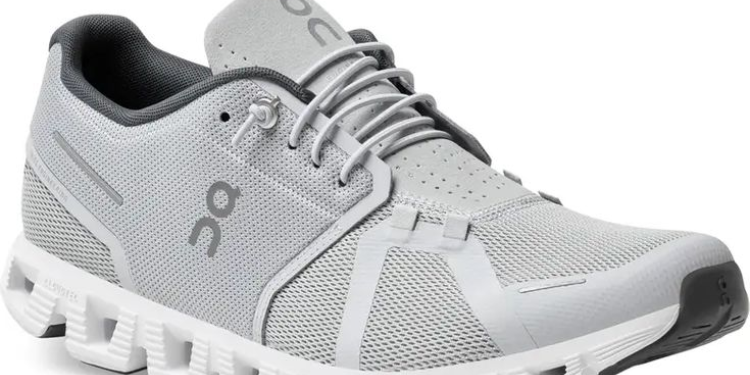
In their quest for existing solutions, avid runners could be tempted to independently expedite the running shoe sole repair. After all, the internet is teeming with DIY running shoe sole repair articles and videos. However, the question arises – does doing it yourself measure up to professional restoration services? To provide an in-depth and balanced feature, we must consider both sides.
Assessing the Damage: When to Choose DIY
Choosing DIY repairs could be due to convenience, budget limitations, or urgency. Shoe Goo or lock-stitch suture techniques are often pitched as quick fixes to get your footwear back on track. But one must remember – these are temporary, last-minute solutions. They can potentially carry you through your next trail race, but in the long term, they might fall short.
The Merits of Professional Expertise in Sole Repair
On the flip side, professional running shoe sole restoration tips guide us to a path of seamless restoration. Professional repair is far more comprehensive, encompassing re-soling your footwear and complete rejuvenation.
Talented craftsmen from renowned companies like NuShoe employ a meticulous process, including using high-grade materials for the soles, reviving leather, and providing a polished finish. By adhering to the original design and silhouette of the shoe, they offer a renewal that goes beyond average repair and borders on rejuvenation.
| Type of Repair | Pros | Cons |
|---|---|---|
| DIY Running Shoe Sole Repair | Economical, Convenient, Quick Fix | Temporary Solution, Limited Durability, Might Damage the shoe further |
| Professional Running Shoe Sole Restoration | Long-lasting, Brand-backed Assurance, High Level of Renovation | More Costly, Takes Longer Time |
Professional restored running shoes come with the assurance and experience each brand carries with vast experience dealing with diverse brands and models. For dedicated runners, an investment in professional restoration is worthwhile in the long run since it extends the lifespan of costly, high-performing running shoes, saving money and reducing environmental waste.
In the end, it’s about maintaining running shoes after sole repair. Whether you retrace the DIY route to patch up your soles or place your trust in professionals, careful maintenance post-repair is crucial for preserving your running performance and the longevity of your footwear.
“read more: Running Shoes for Women“
Extending Running Shoe Sole Life Through Maintenance
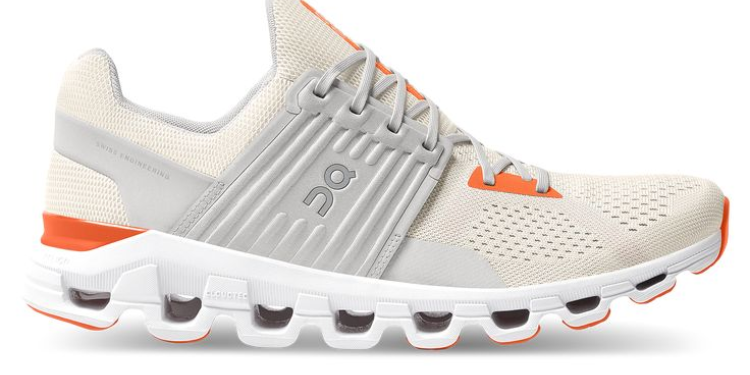
Extending the life of your running shoe soles is a significant factor in sustaining your investment in athletic footwear. A well-maintained running shoe offers you more miles under the laces, cost savings, and contributes positively to environmental sustainability. Integral to this process are a few running shoe sole repair techniques and vital maintenance steps.
It’s key to understand that cleaning your shoes after each run goes beyond aesthetics. Dust, dirt, and gritty particles become embedded in shoe material over time, causing undue friction and wear on your running shoes’ upper part and the soles.
Proper storage of running shoes is another crucial aspect of maintaining their condition. Avoid direct heat and sunlight, as these can degrade and harden the soles, causing them to crack or crumble over time.
The reality is, despite our best efforts, running shoe soles will undergo wear and tear with usage. However, being proactive in taking timely measures to repair will help manage this wear and tear. These include engaging professional services for resolving and repairing cracks or loose portions on the soles.
| Maintenance Activity | Benefits |
|---|---|
| Cleaning shoes after each run | It prevents the accumulation of grime and reduces friction on soles |
| Proper storage | It avoids sole degradation, hardening, and, ultimately, cracking |
| Timely repairs | Helps manage wear and tear, extends the lifespan of the shoes |
By incorporating these maintenance habits into your footwear care regime after a running shoe sole repair, you not only prolong the lifespan of your boots but also preserve their performance capabilities. This way, your running shoes will remain in top condition, delivering the desired comfort and performance for extended periods.
“read also: Running Shoes for Plantar Fasciitis“
Running Shoe Sole Restoration Tips from the Experts
As an avid runner, you understand the importance of maintaining the integrity of your running shoe soles. Selecting suitable materials for sole repair and utilizing proven repair techniques can be crucial to the durability and functionality of your footwear. Let’s delve into some expert advice on this matter.
Choosing the Right Materials for Sole Repair
When it comes to running shoe sole repair techniques, the choice of material is paramount. Experts often recommend using quality adhesives that provide a secure bond between the old shoe and the new sole. Furthermore, it is advised to match the sole material to the shoe’s original specifications to maintain its performance characteristics. This involves considering the shoe’s weight, flexibility, and shock absorption capacity.
“read also: Running Shoes with Arch Support“
Lock-Stitch Suture for Durable DIY Repairs
A technique like the lock-stitch suture offers a solid, blister-free repair solution for DIY repairs. This ordinary stitch-in shoe repair has proven solid and reliable, widening its use among DIY enthusiasts. However, unless administered with the proper proficiency, the results may often be temporary at best.
While DIY repairs can be quick, professional services can offer a more comprehensive solution, often working with original materials or high-grade alternatives to retain the shoe’s integrity. This attention to detail promises a restoration that doesn’t just revive your shoe’s performance but also contributes to a longer lifespan, serving user needs and championing environmental sustainability.
- Running Shoes for High Arches
- Flyknit Lightweight Shoes
- Running Shoes Nike
- Running Shoes with Ankle Support
- Running Shoes for Supination
- Running Shoes for Wide Feet
In conclusion, repairing the soles of running shoes is crucial for maintaining performance and comfort and has significant environmental benefits. Whether you choose to do it yourself or opt for professional restoration, regular maintenance can extend the life of your running shoe soles. Remember, a well-maintained running shoe can keep you running longer and more robust.
When it comes to “Running Shoes Sole Repair”, it’s essential to understand the structure of your shoe. The rubber sole, midsole, and tread are vital parts of the shoe that often need repair. If the sole has come off or got a little damaged, don’t worry. You can use a strong adhesive like gorilla glue to reattach or repair the part of the sole. Before applying the glue, clean the area thoroughly. You can use a toothpick to remove debris inside the shoe or around the toe area.


